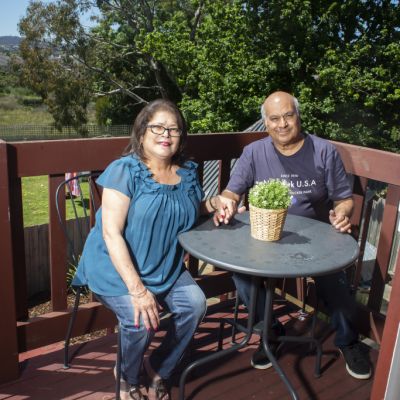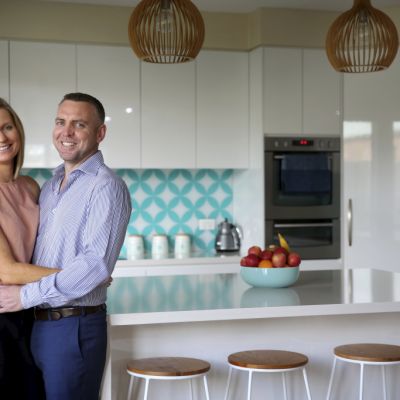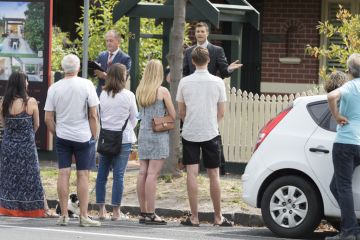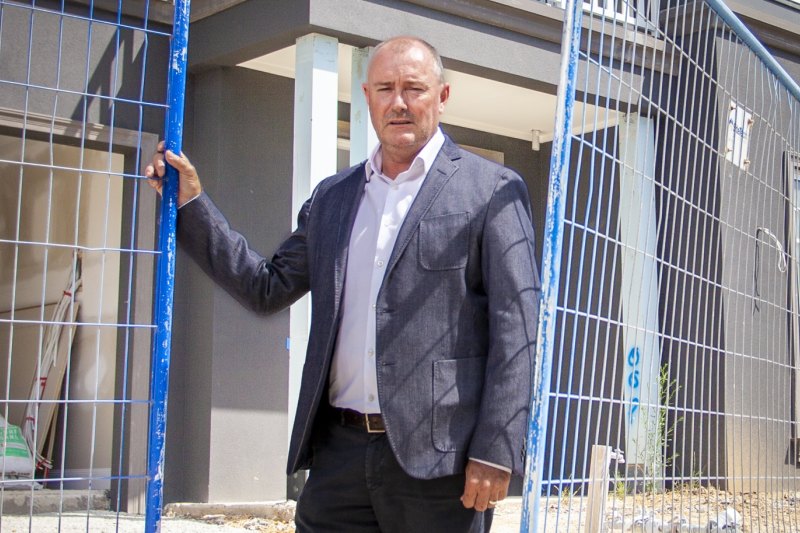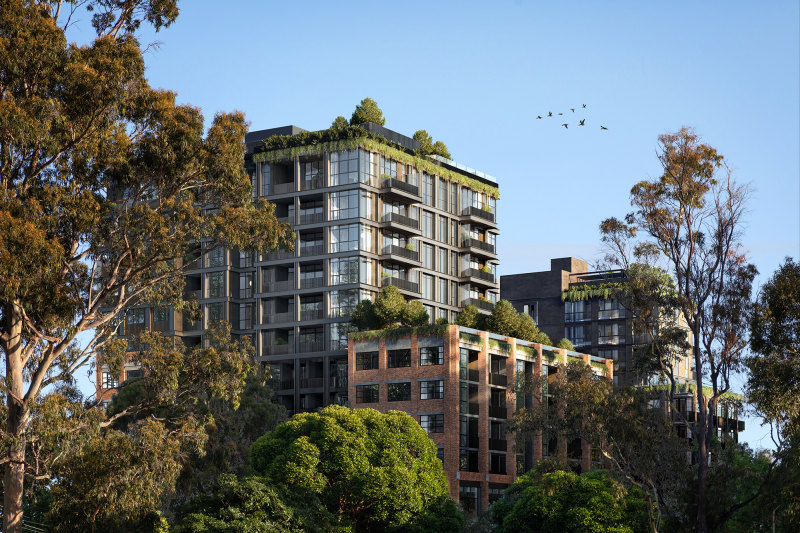Deposit scheme an ‘election sop’, national strategy on housing affordability needed: John Hewson
A key federal government policy on housing affordability is little more than “an election sop”, while piecemeal policy and a lack of forward-thinking are crippling both state and federal responses to the issue, former Liberal leader John Hewson says.
And housing experts are calling on the different levels of government to work together on housing supply and affordability as dwelling prices start to rebound.
Housing affordability was a white-hot issue three years ago when the market was booming, particularly in the two largest capital cities, but it was followed by a period of falling prices that allowed some marginal first-home buyers a chance to purchase.
But prices did not fall far enough for many and have now picked up again after the clear federal election result, a string of interest rate cuts and regulatory moves that allow buyers to borrow more.
Prices fell 12 per cent peak-to-trough in Sydney and 10 per cent in Melbourne, but both cities have recorded their fastest quarterly recovery since the 1990s, with Sydney prices up 4.8 per cent just in the three months to September and Melbourne up 4.1 per cent.
Dr Hewson said housing policies in recent years had little-to-no effect.
“All they’re doing is saying we’re giving you lower interest rates or tax cuts. But they’re not solving any of these problems,” Dr Hewson told Domain on Tuesday.
“You need to get everyone focused on the magnitude of the problem … One of the big weaknesses of government is there have been no outcomes.”
Median house prices, capital cities
| City | Median | QoQ | YoY |
| Sydney | $1,079,491 | 4.8% | -1.6% |
| Melbourne | $855,428 | 4.1% | 0% |
| Brisbane | $562,847 | -1% | -1.8% |
| Adelaide | $538,550 | -0.6% | 0.7% |
| Canberra | $738,864 | -0.7% | 0.6% |
| Perth | $527,107 | -1% | -2.4% |
| Hobart | $482,960 | 1.3% | 2.6% |
| Darwin | $521,651 | 1% | -4.4% |
| National | $773,635 | 2.7% | -1% |
Source: Domain House Price Report, September quarter 2019
Housing affordability has been a looming spectre on the minds of policy makers, but a lack of action has ensured governments will now have to battle for decades to solve the issue, he said.
“I used to write about the coming housing crisis back in the ’80s, and now we’re in that crisis,” he said. “It’s going to take a couple of decades to reverse it.
“On the financial side of things, most of the schemes just add to the price – the developer benefits from the first-home buyer subsidies at the moment; they just put the price up.
“They have that little scheme that came out a couple of days ago, which is just an election sop.”
The First Home Loan Deposit Scheme passed federal Parliament this month. It will enable 10,000 buyers a year on low and middle incomes to purchase a home with a deposit as little as 5 per cent, helping a fraction of the 108,000 first-home buyers that bought over the year to August. The policy was announced before the federal election and adopted as policy by both parties.
Both NSW and Victoria have a variety of schemes and concessions designed to help first-home buyers into a home, such as stamp duty concessions or grants for new builds, but Dr Hewson said this did little to help supply-side issues or persistently strong demand in the two largest capitals.
Dr Hewson suggested an approach to housing affordability that would take into account increasing supply while also curtailing demand.
Independent economist and Vice-Chancellor’s Fellow at the University of Tasmania, Saul Eslake, says the sharp upturn in prices will put affordability back on the radar, particularly once the drop in dwelling approvals starts to bite.
“That foreshadows the possible reemergence, particularly in NSW, of a shortage of housing,” Mr Eslake said.
Median unit prices, capital cities
| City | Median | QoQ | YoY |
| Sydney | $694,840 | 2.6% | -5% |
| Melbourne | $520,940 | 3.7% | 6.3% |
| Brisbane | $375,179 | -3.4% | -5.6% |
| Adelaide | $302,756 | -5.2% | -2.3% |
| Canberra | $432,252 | -4.4% | -3.4% |
| Perth | $344,672 | 2.8% | -1.9% |
| Hobart | $395,715 | 1.7% | 10.4% |
| Darwin | $294,951 | -3.3% | -7.1% |
| National | $539,256 | 1.8% | -2% |
Source: Domain House Price Report, September quarter 2019
Executive Director of the Australian Housing and Urban Research Institute Michael Fotheringham said any type of national consensus would help.
“What’s more important than a national strategy is bringing back the Council of Australian Governments structures on housing and homelessness,” Dr Fotheringham said. “The absence of that ministerial council is a shame and would do a lot to help us move towards solving those issues.
“Since the federal election, we have seen the appointment of a Minister for Housing. What we’d like to see is a further step of establishing that council.”
BIS Oxford Economics associate director of residential property Angie Zigomanis said outside of cutting immigration, decreasing the need for young people to travel to Sydney and Melbourne to find work would help ease prices.
“People leave Adelaide for the east coast because there aren’t employment prospects, so the problem there is, make it so jobs aren’t concentrated in one place,” he said.
On supply, Grattan Institute fellow Brendan Coates said reducing NIMBYism would be a major help.
“[Affordability] will only get a lot better if governments allow more homes to be built,” he said. “We have only 535 dwellings per 1000 adults which is the lowest in the developed world.
“This is really the challenge in the politics of NIMBYism. The state government needs to be honest about what the effects are.
“Your kids won’t be able to buy a home, and then you won’t be able to downsize near where you grew up. If the local governments don’t meet targets, then the state government needs to take over.”
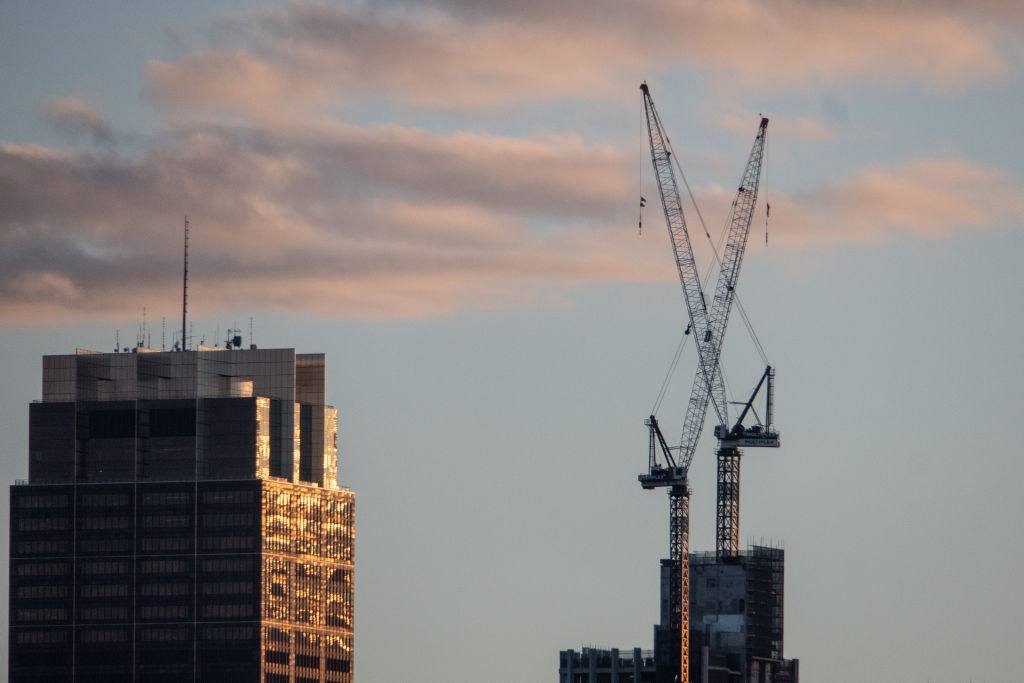
Federal Housing Minister Michael Sukkar provided a statement outlining his government’s policies to alleviate housing affordability issues, including the First Home Super Saver scheme open to all first-home buyers that allows the withdrawal of voluntary super contributions for a deposit. He had previously told Domain he would be keen to work with other levels of government to make it easier for Australians to afford a home.
The Victorian Housing Minister Richard Wynne said he would like to see more co-operation.
“There’s a real opportunity to work collaboratively between federal, state and local government on the provision of public, social and affordable housing,” he said. “We will be actively reaching out to the federal government to establish that partnership.”
NSW Premier Gladys Berejiklian, who called housing affordability the “biggest issue” for residents of NSW when she came to office in early 2017, referred enquiries to the treasurer.
NSW Treasurer Dominic Perrottet said: “Every state and territory faces different challenges when it comes to housing affordability, but we are always open to discussions with the Commonwealth government on measures that can make it easier for people to find a home.”
We recommend
We thought you might like
States
Capital Cities
Capital Cities - Rentals
Popular Areas
Allhomes
More
